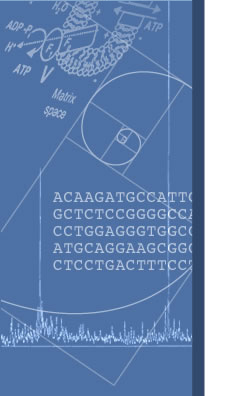|
|
 |
  |
 |
| Bioenergetics | Rare Diseases | Oxygen | Calcium Uniporter |
 |
 |
| |
 |
 |
A long-term goal of our laboratory is to identify strategies with which to suppress mitochondrial dysfunction. Using a genome-wide CRISPR screen we made the unexpected discovery that hypoxia (low oxygen) can suppress mitochondrial dysfunction in a variety of cellular and animal models. Our initial paper reported that low, inhaled oxygen can suppress neurological disease in an accurate mouse model of mitochondrial Leigh syndrome due to mitochondrial complex I deficiency. We then showed that in this same mouse model, hypoxia not only prevents, but can also reverse neurological disease in mice with advanced disease. In subsequent work we showed that yeast, worm, and mouse models of Friedreich’s ataxia -- due to recessive loss of frataxin -- are suppressed by low oxygen and worsened by high oxygen. More recently, we showed that chronic, continuous hypoxia can reverse motor symptoms and prevent neurodegeneration in a mouse model of Parkinson's disease. In ongoing work we are deciphering the biochemical and physiological mechanisms of hypoxia rescue while also paving a translational path forward, including develipment of a "hypoxia in a pill" regimen that is showing promise in pre-clinical studies.
|
|
| Selected Publications |
 |
Hypoxia as a therapy for mitochondrial disease
Jain IH, Zazzeron L, Goli R, Alexa K, Schatzman-Bone S, Dhillon H, Goldberger O, Peng J, Shalem O, Sanjana NE, Zhang F, Goessling W, Zapol WM, Mootha VK.
Science: 352(6281):54-61. 2017 |
 |
Hypoxia treatment reverses neurodegenerative disease in a mouse model of Leigh syndrome
Ferrari M, Jain IH, Goldberger O, Rezoagli E, Thoonen R, Chen K, Sosnovik DE, Scherrer-Crosbie M, Mootha VK, Zapol WM.
Proceedings of the National Academy of Sciences U.S.A.: 114(21):E4241-E4250. 2017 |
 |
Oxygen in mitochondrial disease: can there be too much of a good thing?
Mootha VK, Chinnery PF.
Journal of Inherited Metabolic Disease: 41(5):761-763. 2018 |
 |
Hypoxia rescues Frataxin loss by restoring iron sulfur cluster biogenesis
Ast T, Meisel JD, Patra S, Wang H, Grange RMH, Kim SH, Calvo SE, Orefice LL, Nagashima F, Ichinose F, Zapol WM, Ruvkun G, Barondeau DP, Mootha VK.
Cell: 177(6):1507-1521. 2019 |
 |
Oxygen and mammalian cell culture: are we repeating the experiment of Dr. Ox?
Ast T, Mootha VK.
Nature Metabolism: 1:858-860. 2019 |
 |
Leigh Syndrome mouse model can be rescued by interventions that normalize brain hyperoxia, but not HIF activation
Jain IH, Zazzeron L, Goldberger O, Marutani E, Wojkiewicz GR, Ast T, Wang H, Schleifer G, Stepanova A, Brepoels K, Schoonjans L, Carmeliet P, Galkin A, Ichinose F, Zapol WM, Mootha VK.
Cell Metabolism: 30(4):824-832. 2019 |
 |
Genetic screen for cell fitness in high or low exygen highlights mitochondrial and lipid metabolism
Jain IH, Calvo SE, Markhard AL, Skinner OS, To TL, Ast T, Mootha VK.
Cell: 181(3):716-727. 2020 |
 |
Hypoxia extends lifespan and neurological function in a mouse model of aging
Rogers RS, Wang H, Durham TJ, Stefely JA, Owiti NA, Markhard AL, Sandler L, To TL, Mootha VK.
PLOS Biology: 21(5):e3002117. 2023 |
 |
Continuous, but not intermittent, regimens of hypoxia prevent and reverse ataxia in a murine model of Friedreich's ataxia
Ast T, Wang H, Marutani E, Nagashima F, Malhotra R, Ichinose F, Mootha VK.
Human Molecular Genetics: 32)16):2600-2610. 2023 |
 |
Hypoxia and intra-complex genetic suppressors rescue complex I mutants by a shared mechanism
Meisel JD, Miranda M, Skinner OS, Wiesenthal PP, Wellner SM, Jourdain AA, Ruvkun G, Mootha VK.
Cell: 187(3):659-675. 2024 |
 |
Feasibility of Delivering a 5-Day Normobaric Hypoxia Breathing in Healthy Volunteers in a Hospital Setting
Berra L, Medeiros KJ, Marrazzo F, Patel S, Imber D, Rezoagli E, Yu B, Sonny A, Bittner EA, Fisher D, Chipman D, Sharma R, Shah H, Gray BE, Harris NS, Ichinose F, Mootha VK.
Respiratory Care: 69(11):1400-1408. 2024 |
 |
Therapeutic Hypoxia for mitochondrial disease via enhancement of hemoglobin affinity and inhibition of HIF-2α
Wang H, Miranda M, Marutani E, Lichtenegger P, Wojtkiewicz GR, Ichinose F, Mootha VK.
The Journal of Clinical Investigation: 134(23):e185569. 2024
|
 |
Hypoxia as a medicine
Rogers RS, Mootha VK.
Science Translational Medicine: 17(782):eadr4049. 2025 |
 |
Hypxia ameliorates neurodegeneration and movement disorder in a mouse model of Parkinson's disease
Marutani E, Miranda M, Durham TJ, Kim SH, Russell DL, Wiesenthal PP, Lichtenegger P, Menard MA, Brzozowski CF, Li H, Ruvkun G, Meisel JD, Volpicelli-Daley L, Mootha VK, Ichinose F
Nature Neuroscience |
|
|
|
|




